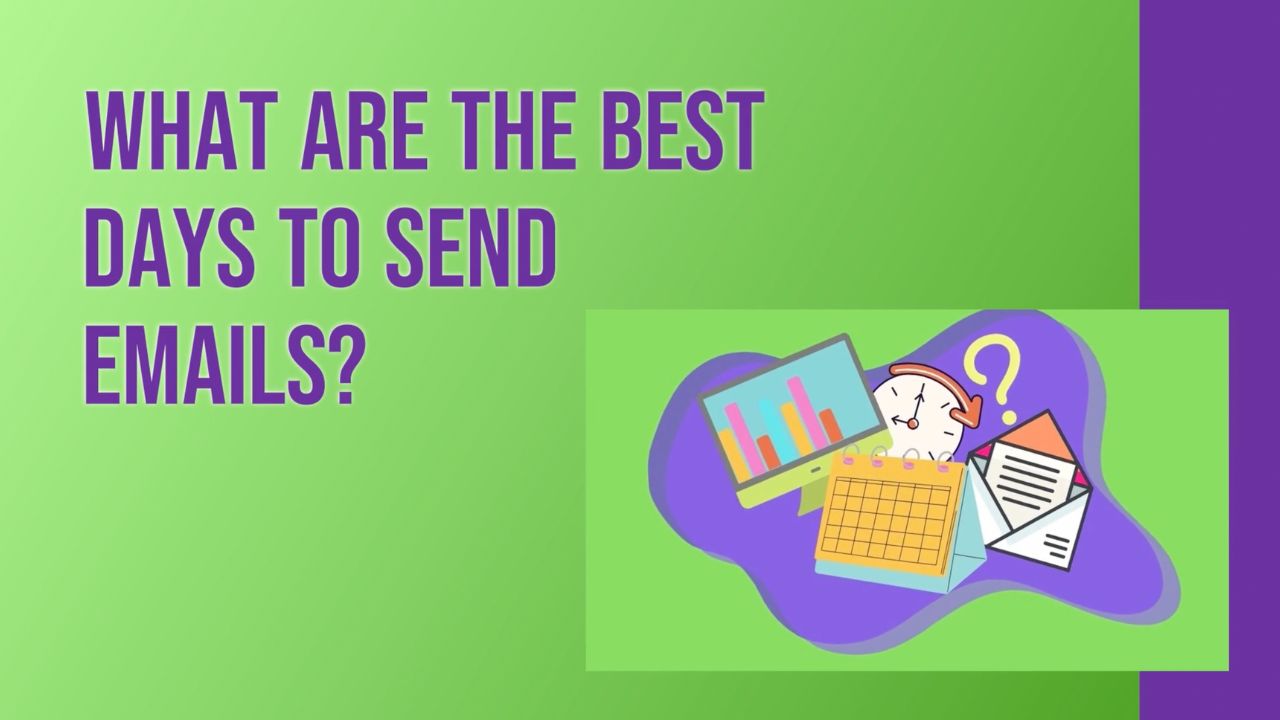If your content output feels a bit scattered—or worse, unpredictable—you're not alone.
Inconsistent publishing, mixed brand voice, and shifting quality standards can quietly erode audience trust.
And when trust falters, so does engagement.
Your readers expect a clear, steady voice and a reliable flow of content that speaks directly to their interests.
Falling short not only risks confusion—it gives your competitors a chance to step in.
This post outlines the key strategies for building and maintaining content consistency that your audience can count on.
Here’s what we’ll cover:
- What content consistency really means—beyond just tone and publishing schedules
- How to tackle common challenges like resource constraints and platform juggling
- Strategic planning techniques to align your content with business goals
- Tools and technologies to streamline your workflow and maintain quality
- How to build a content team dedicated to consistency
- Metrics that measure whether your consistency efforts are actually paying off
- A case study showing what success looks like in practice
Let’s dig into how you can transform your content operation into a trust-building engine—without burning out your team or breaking your strategy...
1. What Is Content Consistency?
At its core, content consistency is about reliability and predictability in your digital marketing efforts.
But what does that really entail?
Let's break it down into its fundamental components:
Whether you're crafting a blog post or an Instagram caption, maintaining a consistent tone and voice is crucial.
This doesn't mean every piece of content must sound identical, but your audience should be able to recognize your brand voice across all platforms.
Consistency in style involves adherence to certain aesthetic guidelines like your brand's color scheme and typography.
Quality consistency means the content should consistently meet or exceed a certain standard.
Every piece of content should be well-researched, factually accurate, and provide real value to your audience.
This is about how often you post.
Whether it’s twice a week or twice a month, sticking to a regular schedule helps set audience expectations.
They’ll know when to look out for your next post, which can greatly enhance engagement.
Consistency in themes and topics helps in establishing your authority in a particular niche.
While it's okay to explore diverse subjects occasionally, your primary focus should remain aligned with your brand’s expertise and audience's interests.
Why Does Consistency Matter?
-
Builds brand identity—regularly delivering content that speaks with a unified voice and style reinforces your brand identity, making you more recognizable and reliable to your audience.
-
Enhances trust—when visitors see that you consistently provide high-quality content, they're more likely to trust your brand. This trust is crucial not just for engagement, but also for conversions.
-
Improves SEO—search engines love consistency. Regular updates signal to search engines that your site is active, boosting your rankings and improving visibility.
Use tools like style guides and voice charts to maintain tone and style consistency across all content creators and platforms.
This not only helps in keeping the content aligned with the brand’s identity but also saves editing time and resources.
By understanding and implementing these aspects of content consistency, you’re better equipped to build a loyal audience and achieve sustained success in your digital marketing efforts.
Let's move on to explore some of the common challenges you might face in maintaining this consistency and how to effectively overcome them.
Consistency builds trust. A steady tone, style, and schedule turn casual readers into loyal followers—and loyal followers into qualified leads.Click To Post On2. How to Deal With Common Challenges to Maintaining Consistency
Maintaining a steady flow of high-quality content isn't without its hurdles.
Here are some of the most common challenges you might face, along with strategic insights on how to navigate them:
Resource allocation
Limited resources can be a significant barrier, especially for smaller teams.
You might find yourself struggling with insufficient time, budget, or manpower to consistently produce and manage content.
Leverage content repurposing to maximize the value of existing materials.
Convert a popular blog post into a series of social media updates, an infographic, or even a webinar.
This approach not only saves resources but also maintains thematic consistency across channels.
Idea generation
Coming up with fresh, engaging content regularly can be daunting.
Content droughts are real and can derail even the best content calendars.
Implement a continuous idea collection process.
Use tools like Trello or Evernote for team members to drop ideas anytime.
Regular brainstorming sessions and keeping an eye on industry trends can also replenish your idea bank.
Platform management
Different platforms may require different types of content, posting schedules, and engagement strategies, which can complicate consistency.
Develop a platform-specific strategy that aligns with your overall content goals.
Use scheduling tools like Buffer or Hootsuite to maintain a consistent posting schedule across all platforms.
Scaling issues
As your brand grows, scaling content production without losing quality or consistency can become a challenge.
Standardize processes with templates and checklists.
Also, consider investing in training to ensure that all team members are on the same page regarding your brand’s content standards.
Feedback and adaptation
Balancing consistent content while adapting to feedback and changing market trends can be tricky.
Use analytics to monitor the performance of your content.
Be ready to tweak your strategy based on what the data tells you about your audience's preferences and behaviors.
Regular audits of your content can help identify what's working and what isn't.
This not only helps in maintaining quality and consistency but also ensures your content evolves in alignment with audience preferences and business goals.
By recognizing these challenges and implementing these strategic insights, you can better manage the complexities of content consistency, ensuring your marketing strategy remains robust and responsive to your audience’s needs.
Next, let’s delve into how strategic planning can streamline your content production and maintain consistency.
3. Use Strategic Planning for Consistent Content
To ensure your content not only resonates with your audience but also remains steady and impactful, strategic planning is non-negotiable.
Here’s how you can create a foolproof plan that guarantees content consistency:
Develop a Comprehensive Content Calendar
Align Content With Business Goals
Resource Planning
Establish Workflow Processes
Plan for Flexibility
Use a mix of long-term planning (quarterly or yearly) and short-term adjustments (weekly or monthly) to balance consistency with adaptability.
This way, you can keep your content fresh and relevant while sticking to a consistent publishing schedule.
Strategic planning is more than just filling up a calendar; it’s about creating a dynamic yet reliable roadmap for your content.
This ensures that every piece of content is purposeful, timely, and perfectly aligned with your brand’s goals, paving the way for a strong, trust-based relationship with your audience.
Next, we'll explore some essential tools and technologies that can help maintain this consistency effortlessly.
Your content calendar isn’t just a schedule—it’s a strategic map. Align every piece with specific business goals to maximize impact.Click To Post On4. Tools and Technologies You Need to Build Consistency
Leveraging the right tools and technologies can dramatically streamline your content creation and distribution processes, ensuring consistency without the headache.
Here’s a rundown of some essential tools that can help you maintain a steady rhythm in your content strategy:
🖥️ Content Management Systems (CMS)
- WordPress—the go-to platform for many blogs and websites. It’s customizable with numerous plugins that can automate and simplify many aspects of content management.
- Hubspot—beyond just a CMS, Hubspot offers a full suite of marketing tools including content scheduling, social media management, and analytics.
⏰ Scheduling Tools
- Buffer—perfect for managing social media posts. Buffer allows you to schedule posts across various platforms and provides analytics to track engagement.
- Hootsuite—similar to Buffer, but with added capabilities for monitoring social media conversations and managing team collaborations.
📋 Project Management Tools
- Asana—keep your content projects organized and on track. Asana helps you plan, assign, track, and manage tasks within your team.
- Trello—a visually-oriented tool that’s great for mapping out content calendars and tracking progress with its card-based design.
📊 Analytics Platforms
- Google Analytics—essential for tracking website traffic and user engagement. Understanding these metrics allows you to tweak your strategy for better consistency in what resonates with your audience.
- BuzzSumo—provides insights into what content is performing best on social media and who are the major influencers, helping you to tailor your content more effectively.
🤖 Automation Tools
- Zapier—connect your apps and automate workflows. Zapier can link your CMS, social media platforms, and analytics tools to streamline every aspect of content management.
- IFTTT (If This Then That)—similar to Zapier, IFTTT allows you to create automated actions between your internet services, making content distribution as seamless as possible.
Integrate these tools with your existing systems to create a unified platform where every piece of content is planned, executed, monitored, and analyzed.
This not only saves time but also ensures that every content piece is aligned with your strategic goals.
By incorporating these tools into your content strategy, you can more effectively manage your workload, ensure consistent quality and style, and maintain a regular publishing schedule.
This technological support is key to building a reliable and professional online presence that your audience can trust.
Next, let's discuss how building a dedicated content team can further enhance consistency in your content creation efforts.
5. Create a Content Consistency Team
Establishing a dedicated team focused on content consistency can significantly enhance the quality and reliability of your content.
Here’s how you can build and optimize a team to keep your content strategy on track:
🎯 Define Clear Roles and Responsibilities
🤝 Promote Collaboration and Communication
- Regular meetings—schedule weekly or bi-weekly meetings to discuss upcoming content, review performance, and adjust strategies as needed.
- Collaborative tools—utilize tools like Slack or Microsoft Teams to keep communication fluid and accessible, allowing team members to share ideas and feedback easily.
📈 Set Measurable Goals and KPIs
- Engagement metrics—track likes, shares, comments, and other engagement metrics to gauge the effectiveness of your content.
- Traffic and conversion rates—monitor how consistent content publishing impacts website traffic and conversion rates, adjusting strategies to optimize performance.
📘 Provide Training and Development
- Continuous learning—offer training sessions to keep the team updated on the latest content trends and technologies. Encourage attendance at webinars and workshops.
- Feedback loops—implement a system for providing constructive feedback, allowing team members to learn from each other and improve their skills.
💡 Encourage Creativity and Innovation
🌟 Ensure that every team member understands the importance of their role in maintaining content consistency.
A well-informed and motivated team is crucial to executing a unified content strategy that builds and maintains audience trust.
By carefully constructing a team dedicated to content consistency, you not only streamline your content production process but also enhance the overall impact of your content marketing efforts.
Next, let’s explore how to measure the effectiveness of your content consistency strategies to ensure they’re delivering the desired results.
6. Measure the Impact of Consistent Content
To truly understand the power of content consistency, you need to measure its impact meticulously.
Doing so not only validates your efforts but also guides future strategies.
Here’s how you can effectively gauge the performance of your consistent content delivery:
📊 Engagement Metrics
- Social interactions—track likes, comments, shares, and mentions. These are direct indicators of how engaging your content is.
- Content reach—measure how far your content is spreading. Are more people seeing your posts as you maintain a regular posting schedule?
- Time spent on page—use tools like Google Analytics to see how long visitors are staying on your content pages. Longer durations often signal more engaging and valuable content.
Use a dashboard tool like Google Data Studio to visualize these metrics.
It makes trends easier to spot and share with your team.
🚦 Website Traffic Analysis
- Traffic sources—identify which pieces of content are driving traffic to your website. Is consistent blogging boosting your organic search traffic?
- Page views—monitor the number of views each content piece receives. A steady increase can indicate growing interest and trust in your content.
🔑 Conversion Metrics
- Lead generation—track how many leads are generated from each content piece. Consistent, quality content should see a gradual increase in lead conversion.
- Subscriber growth—measure the growth of your email list or social media followers. Consistent content should help grow your audience base steadily.
🌐 SEO Performance
- Search engine rankings—monitor your rankings for key terms. Are you moving up in search results with regular, optimized posts?
- Backlinks—keep an eye on the number and quality of backlinks. High-quality, consistent content often earns more backlinks, boosting your SEO efforts.
🗣️ Audience Feedback
- Surveys and polls—directly ask your audience their thoughts on your content’s consistency. Is it helping them? What improvements do they suggest?
- Comments and reviews—analyze feedback in comments and reviews. Positive trends can confirm your content's effectiveness.
Regularly updating these metrics against your set goals provides a clear picture of how content consistency impacts your overall marketing strategy.
It helps pinpoint what’s working and what might need tweaking.
By thoroughly measuring these aspects, you not only validate the effectiveness of your content consistency but also gain valuable insights that can shape future strategies, ensuring that your content continues to engage and convert.
Next, let's explore a real-world case study to see these strategies in action.
Don’t guess—measure. Track engagement, traffic, and conversions to validate your consistency strategy and refine what works best for your audience.Click To Post OnCase Study: Successful Content Consistency
Let’s dive into a real-world example to illustrate the power of content consistency.
Buffer, a well-known social media management tool, provides an excellent case study on how consistent, high-quality content can drive significant business results.
Background
Buffer’s blog is at the heart of their content strategy.
They focus on providing value through in-depth articles about social media strategies, productivity tips, and case studies.
The goal is to establish Buffer as a thought leader in the social media space.
Strategies Employed
Results Achieved
- Increased website traffic—Buffer’s consistent blogging has significantly increased their organic search traffic. They are often ranked high on search engine results pages for keywords related to social media marketing.
- Enhanced brand authority—their in-depth content has established Buffer as an authority in the social media niche, leading to increased trust and credibility.
- Higher engagement rates—the engaging and relevant content led to higher interaction rates on their blog and social media channels.
- Growth in subscriptions—consistent and valuable content contributed to a steady increase in Buffer’s email list subscribers.
Key Takeaways
- Consistency is key—Buffer’s regular posting schedule keeps their audience engaged and coming back for more.
- Quality matters—high-quality, relevant content fosters trust and establishes brand authority.
- Leverage multiple channels—using a variety of content formats and distribution channels maximizes reach and engagement.
🌟 Like Buffer, consider using a content calendar to plan and execute your strategy.
This not only ensures regularity in posting but also helps in maintaining a balanced and diverse content offering.
Buffer’s success story vividly demonstrates how a well-planned and consistently executed content strategy can lead to increased audience engagement, improved SEO, and overall business growth.
By applying these principles, you too can enhance your brand’s presence and credibility in your respective industry.
Frequently Asked Questions
What is content consistency in digital marketing?
Content consistency involves maintaining a reliable and predictable presence in tone, style, quality, and publishing schedule across all digital platforms.
Why is maintaining content consistency important?
Consistent content builds brand identity, enhances trust with your audience, and improves SEO, leading to better engagement and conversions.
How can you maintain content consistency?
Develop a comprehensive content calendar, use consistent tone and style, align content with business goals, and leverage scheduling and management tools.
What tools help in maintaining content consistency?
Content management systems like WordPress, scheduling tools like Buffer, project management tools like Asana, and analytics platforms like Google Analytics.
What are the challenges in maintaining content consistency?
Challenges include limited resources, idea generation, managing different platforms, scaling issues, and balancing consistency with market changes.
To Conclude
Content consistency isn’t just about discipline—it’s a strategic edge.
When your audience knows what to expect and sees value every time, trust grows. So does engagement, SEO performance, and ultimately, conversions.
To recap:
- Align your content with clear business goals
- Build systems, not just content calendars
- Use tools and teams to scale without sacrificing quality
- Measure what matters—and adjust based on results
Now’s the time to audit your strategy and put consistency to work as a growth driver. Because in a noisy market, reliability wins.



